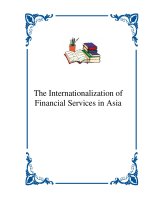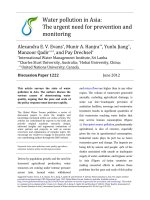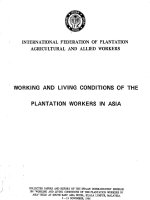ENGLISH IN ASIA South Asia
Bạn đang xem bản rút gọn của tài liệu. Xem và tải ngay bản đầy đủ của tài liệu tại đây (1.31 MB, 13 trang )
ENGLISH IN ASIA
South Asia
● The origins of South Asian English lie in Britain. The first regular
British contact with the subcontinent in 1600 with the British East
India during Queen Elizabeth I.
● The 1784 India Act established a Board of Control responsible to the
British Parliament
● During the period of British sovereignty (the Raj), from 1765 until
independence in 1947, English gradually became the medium of
administration and education throughout the subcontinent.
● The language question attracted special attention during the early
19th century, when colonial administrators debated the kind of
educational policy which should be introduced
INDIA
● In India, the bitter conflict between the supporters of English,
Hindi, and regional languages led in the 1960s to a ‘three language
formula’, in which English was introduced as the chief alternative
to the local state language (typically Hindi in the north and a
regional language in the south).
● It now has the status of an ‘associate’ official language, with
Hindi the official language.
● English has, as a consequence, retained its standing within Indian
society, continuing to be used within the legal system, government
administration, secondary and higher education, the armed forces,
the media, business, and tourism. It is a strong unifying force
INDIA
● In terms of numbers of English speakers, the Indian subcontinent has a
very special position, probably outranking the combined totals of
speakers in the USA and UK
● The traditional view: somewhere between 3 and 5 percent of the people
made regular use of English some 30–50 million around the year 1999,
when the population of India passed a billion.
● Since then, the estimates have crept up – nearly 20 per cent 1/3 of
the people of India are now capable of holding a conversation in
English.
● In real terms these estimates represent a range of 30 million to over
330 million (for comprehension, with a somewhat lower figure, 200
million, for speech production)
OTHER COUNTRIES IN SOUTH ASIA
● Also considerable numbers of English speakers in five other
countries (Bangladesh, Pakistan, Sri Lanka, Nepal, Bhutan).
● South Asia holds about 1/5 of the world’s population.
● Several varieties of English have emerged throughout the
subcontinent, and sometimes collectively referred to as South
Asian English. These varieties are less than 200 years old, but
they are already among the most distinctive varieties in the
Englishspeaking world.
•
The Philippines became independent in 1946, but the
influence of American English remains strong the
largest population of the English speaking states
in the region (about 80 million in 2002), it makes
a significant contribution to world totals.
•
English rapidly became the language of professional
advancement and the chief literary language. Soon
after the turn of the century, higher education
through the medium of English was also introduced.
Singapore
● In the 1950s a bilingual educational system was introduced in
Singapore, with English used as a unifying medium alongside Chinese,
Malay, and Tamil.
● However, English remained the language of government and the legal
system, and retained its importance in education and the media. Its use
has also been steadily increasing among the general population.
● In a 1975 survey, only 27 percent of people over age forty claimed to
understand English, whereas among fifteen to twentyyear olds, the
proportion was over 87 percent. There is also evidence of quite
widespread use in family settings, and a new local variety, known as
Singlish : a population of around 4.3 million in 2002.
Malaysia
● Malaysia: independence (1957)
● Bahasa Malaysia adopted as the national language, and the role of English
accordingly became more restricted.
● Malaymedium education was introduced, with English an obligatory subject
but increasingly being seen as of value for international rather than
intranational purposes – more a foreign language than a second language
● However, the traditional prestige attached to English still exists, for
many speakers. The country had a population of over 22 million in 2002
● The introduction of a British educational system exposed learners to a
standard British English model very early on. English medium schools
began in Penang (now Malaysia’s leading port) in 1816, with senior
teaching staff routinely brought in from Britain
Hong Kong
● English has always had a limited use in the territory, associated
with government or military administration, law, business, and the
media.
● Chinese (Cantonese) is the mothertongue of over 98 per cent of the
population (over 7 million in 2002).
● In recent years, a major increase in educational provision, with
estimates suggesting that over a quarter of the population have some
competence in English.
● English and Chinese have joint official status, but Chinese
predominates in most speech situations, often with a great deal of
language mixing. There is uncertainty surrounding the future role of
English, following the 1997 transfer of power, though patterns of
language use so far have shown little change.









